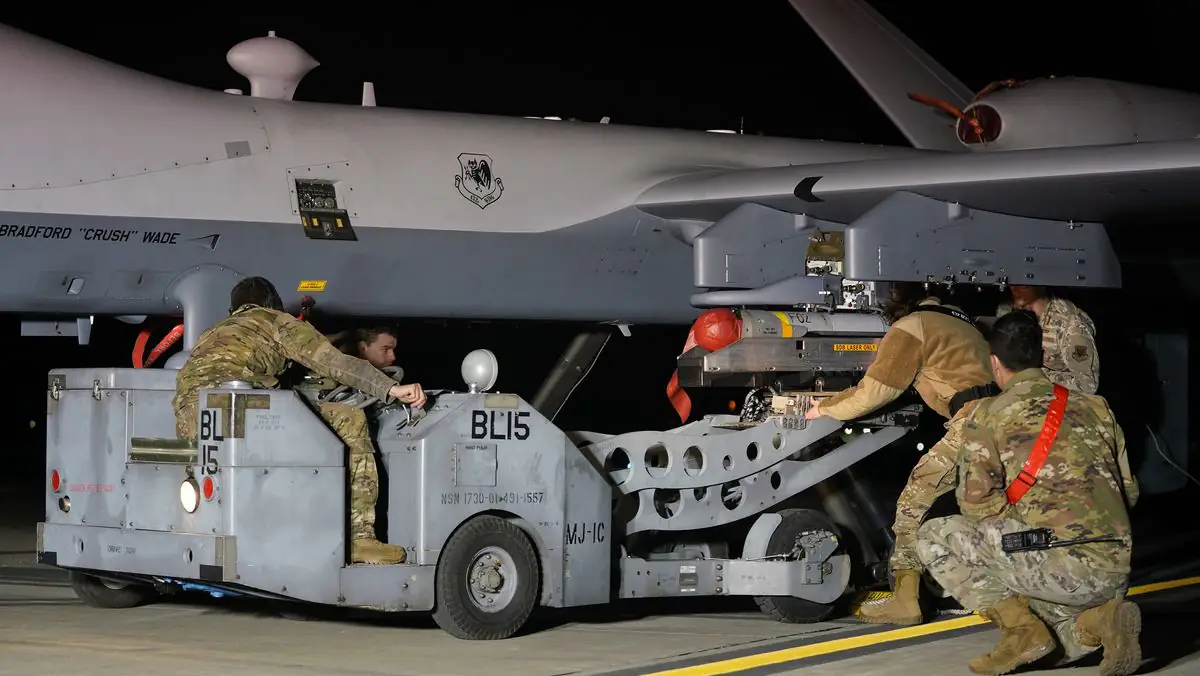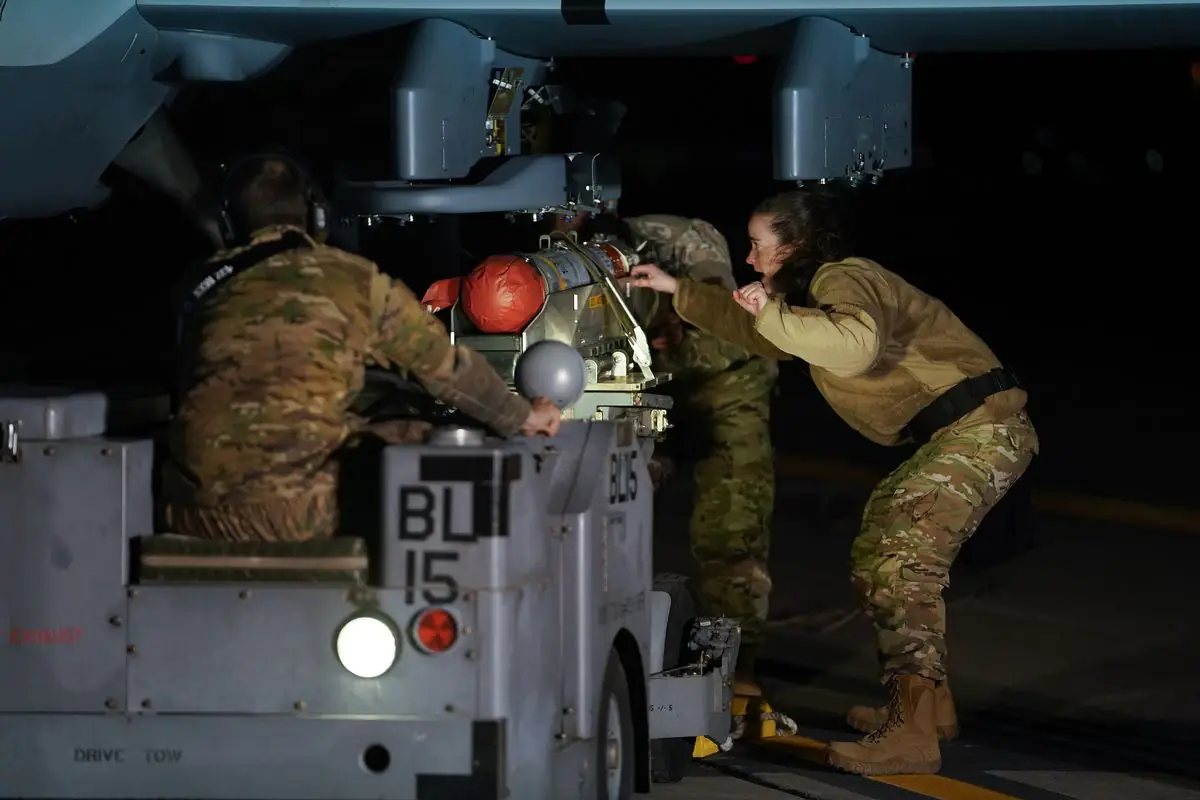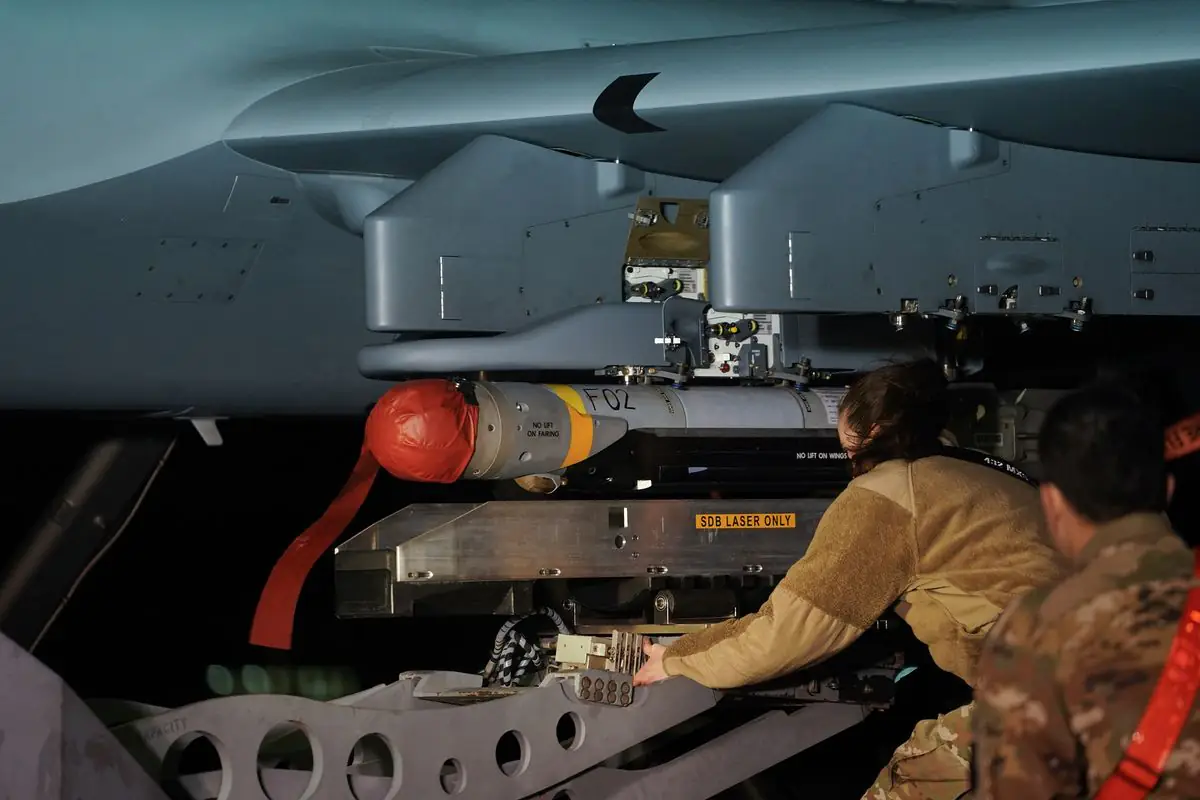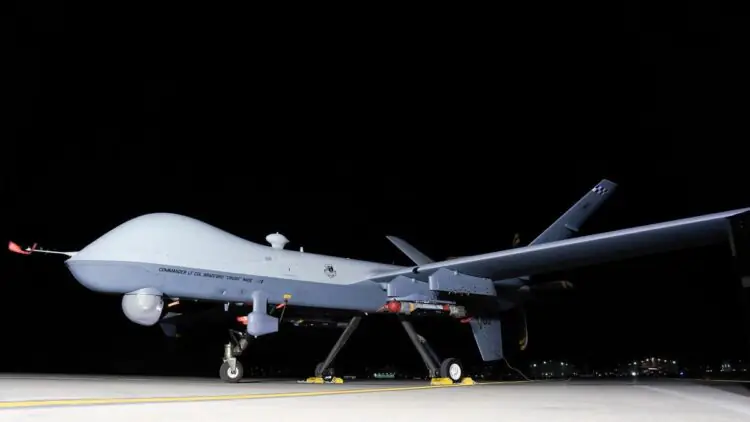The U.S. Air Force has released images showing the integration of the GBU-39 small-diameter bomb onto the MQ-9 Reaper using the newly developed Dual Carriage System.
Discussions about adding the GBU-39 to the MQ-9 Reaper’s arsenal have been ongoing for some time. In 2017, the Air Force announced a $17.5 million contract with General Atomics Aeronautical Systems (GA-ASI) to work on the bomb’s integration. However, the Department of Defense quickly denied this, stating that the contract had not yet been finalized. The contract announcement specifically mentioned the integration of the GBU-39B/B Laser SDB variant.

According to the released images, the first test took place at an airbase in Nevada just a couple of weeks ago, though the photos were published later. The images show an MQ-9 reconnaissance and strike drone equipped with the Dual Carriage System mounted on the inner hardpoint of its left wing. This new mounting system allows for the deployment of two bombs side by side, similar to the M299 launcher already used on the Reaper for carrying AGM-114 Hellfire missiles.
While the original contract specifically mentioned the laser-guided version of the bomb, the photos indicate that the tests involved both the laser-guided GBU-39 and the standard variant. Initially, only one bomb was mounted on the aircraft, but later images show additional bombs being loaded, as evidenced by personnel working on the opposite side of the drone.

Conducting the test at night may have been intended to replicate conditions commonly encountered during Integrated Combat Turn exercises. This approach likely aims to simulate an operational scenario as closely as possible.
Before the introduction of the Dual Carriage System, the MQ-9 Reaper’s hardpoint could only accommodate a single bomb. While the GBU-39 is typically loaded onto the BRU-61 rack, which allows for multiple bombs to be carried, this system has so far been used exclusively on combat aircraft.

A BRU-61 rack loaded with four GBU-39 bombs weighs approximately 634 kg. Mounting two such racks for balance would significantly limit the MQ-9 Reaper’s operational flexibility. Given the drone’s maximum payload capacity of around 1,700 kg, this configuration would restrict the selection of other onboard equipment. The Dual Carriage System, which carries two bombs instead of four, offers greater flexibility in payload selection and allows the MQ-9 to carry a wider range of munitions for different mission requirements. A key difference between the new mounting system and the BRU-61 is the loading process. With the Dual Carriage System, bombs are attached after the rack is mounted on the aircraft, whereas the BRU-61 is installed with all four GBU-39 bombs already secured.
The Air Force has not provided further details, but The Aviationist reports that the system is manufactured by L3Harris and is designated as the BRU-78 Dual Carriage System. It is designed for use on large unmanned aerial vehicles. The BRU-78 integrates two BRU-71 ejector units, also developed by L3Harris, as a modular weapon mounting solution.
Source: theaviationist









